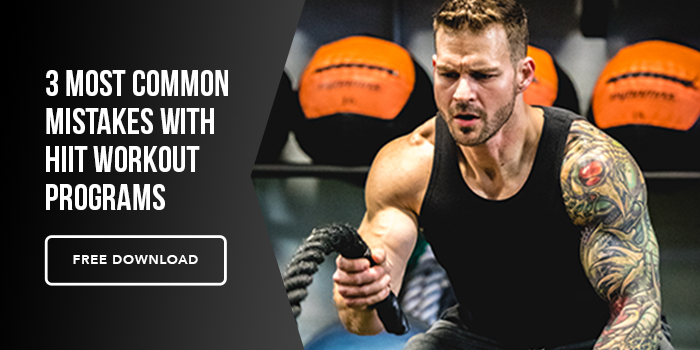The quicker answer is as little as possible. Cardio is more of a tool to utilize when fat loss stalls and you need a way to create more of a caloric deficit. A big problem I see among folks who want to lose weight is they start by doing as much cardio as they possibly can as many days as they can fit it. Initially it makes sense - if some cardio loses some weight, more should be better right? Not necessarily.
Preserving Muscle
The key factor to keep in mind here is we want to be shredded. Being shredded means holding onto as much muscle as possible. The issue, when you are in a deficit of calories, is that you aren’t providing your body with enough calories to gain muscle. If dieting long enough and at a low enough intake, you aren’t providing enough calories to hold onto the muscle you have. Muscle is expensive to keep on. Your body would rather hold onto fat over muscle (it provides energy for staying alive), if it had to choose.
If we know this, then we need to utilize as many tools towards preserving muscle mass first and foremost so that you didn’t waste all that time earning that muscle in the first place.
- Protein - keeping protein to 1g/lb during a diet will help provide enough protein to keep the muscles repairing during periods of caloric deficit. You are still breaking down muscle during your workouts, and off little calories, so step one is making sure you consume enough protein.
- Lifting Intensity - Don’t back off the intensity on your workouts. Another way to send a signal to your body to prioritize KEEPING the muscle during periods of deficit is to continue doing your normal routine of pushing weight at a strong intensity. This is the necessary stimulus that signals the body to retain muscle.
- Calories - The more calories you allow yourself to build up to during the offseason, the more of a range you’ll have to lower calories when you diet. Most diets start by cutting calories down by 300-500. Would you rather have bulked up to 3,000 calories and start your diet with 2500 calories or only eaten 2,500 calories during your bulk and have to diet starting out with 2,000? Big difference. Make sure during your offseason you are reverse dieting, and slowly bringing your calories up each week (100-200 calories) so that your metabolism adjusts to this new allotment with minimal fat gain.
How Much Cardio?
Don’t start with more than you need to. That initial 300-500 caloric deficit starting out should help move the scale down. Once you see you aren’t losing at a rate of 1-2lbs a week, THEN think about incorporating some cardio.
There’s different opinions on how much cardio so I’ll give two popular options
Increase NEAT - for some, just increasing their step count is the easiest transition to creating a bigger deficit. Instead of having to make extra time to run on the hamster wheel for 30 minutes, you may rather increase your step count by 2,000 steps. So let’s say you average 10,000 steps a day normally. Try bumping it up 2,000 a day and see if that pushes the scale down more. If, not keeping adding 1,000 till it does.
Low Intensity Steady State Cardio/HIIT - Some people like to just get it out of the way, rather than trying to find a bunch of time throughout the day to go for 10 minute walks. For this method, I recommend starting out with 2-3 days of LISS for 30 minutes (or 300 calories burned a session) or HIIT (15-20 minutes of 5-6, 20-30 second sprints). If the weight still isn’t moving downward, try adding 5-10 minutes a session. Again, less is better. Once any given cardio session builds up to 35-40 minutes, I’d recommend adding a new day of cardio so the session isn’t so long.
Keeping Track of it All
Don’t think of both dropping calories, and cardio as independent. You can simultaneous manipulate one or the other depending on your preference. If you like allowing for a higher caloric intake during your diet, keep adding cardio. If the cardio is getting to be too much, or you’d just rather eat less food, focus more on lowering the calories by 300 to break the plateau. Just remember, they are interchangeable and you will most likely end up doing a mix of both.
Don’t Overdo It!
One final note - do not push it too far! When/If your calories reach 1800 (men)/ 1400 (women), I do not recommend going lower than that. If your cardio also reaches 20,000 steps or 40-45 minutes for 5-6 days a week, you’ve hit the end of your diet. I can’t stress this enough. Consider taking a break for 2 weeks back at maintenance (then returning to the diet), or stopping the diet altogether and reverse dieting back up. If you haven’t hit your goal body fat, that’s okay. Depending on what body fat and caloric intake you started with, you might not be able to get it in one shot. Your metabolism has slowed down too much at this point, and you aren’t going to hit your goal pushing it further. Instead you’ll end up going backwards and potentially retaining body fat because your body just can’t hold onto the muscle anymore. I’ve seen this happen to too many clients because they weren’t happy with where they were at and pushed it too far.






